Concours de Machines: Results
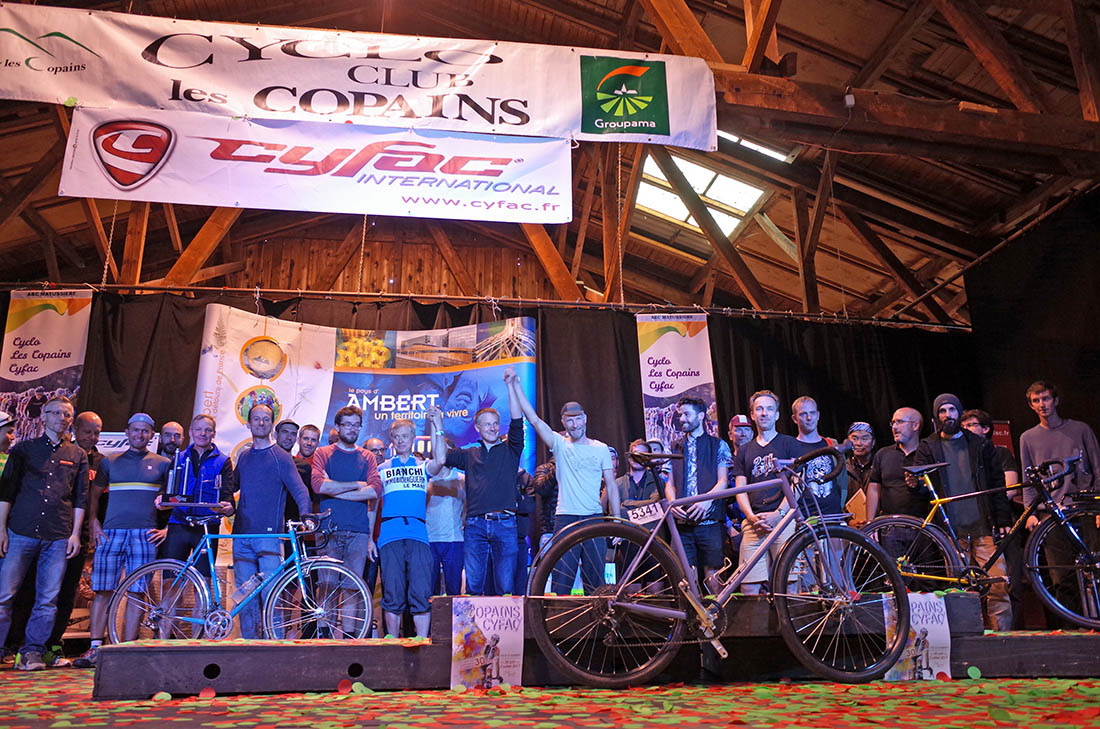
The 2017 Concours de Machines in Ambert (France) was a great success for everybody involved. The bikes were amazing – and much-improved over last year’s machines – the routes were truly challenging, and most of all, the spirit among all participants was wonderful.
The goal was to find the best “light randonneur bike”, with 24 builders bringing their interpretations of this theme. Most participants were French builders, but others came all the way from Sweden, Slovakia, Great Britain, the USA and even Japan. Builders from Germany and Spain had entered the Concours, too, but weren’t able to finish their bikes before the start of the event.
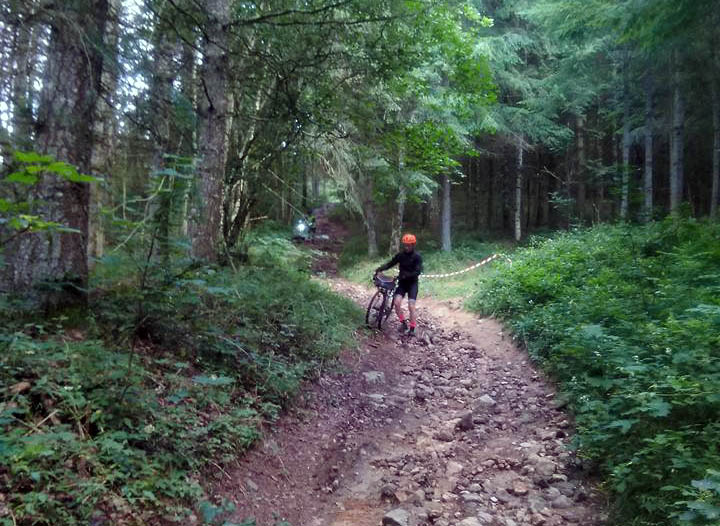
After two days of challenging rides, 18 bikes made it to the finish. The course was very hard: The first day, we covered 230 km (140 miles) on backroads and mountain bike trails with more than 4600 m (15,000 ft) of climbing and many sections that exceeded 15%.
The second day’s roads were smoother, but the route went over four mountain passes. It was a perfect test for the bikes: Some riders chose to go slow to reduce the risk that their bikes broke (above), but they were penalized for their low average speed. Others went faster, but their bikes suffered mechanical problems. To place well, you had to go fast and your bike had to hold together – just as it should be in a Technical Trial.
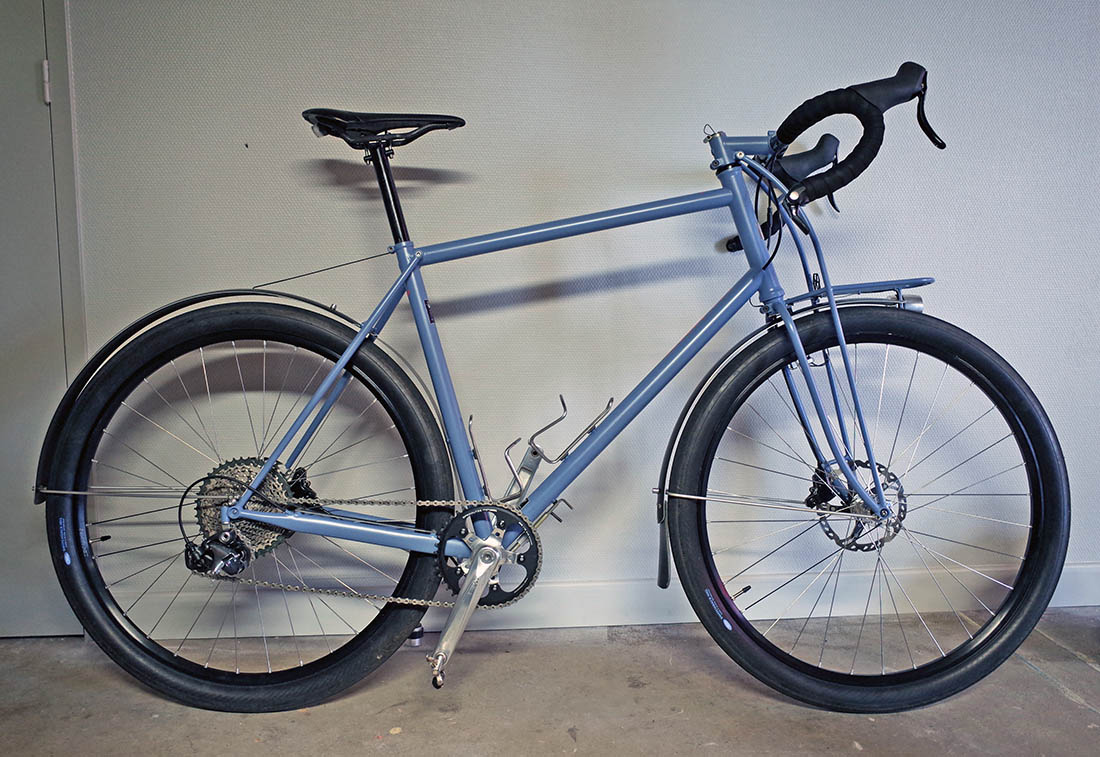
First place went to Pechtregon. The details of the results are not yet available, but it’s clear that the Pechtregon’s combination of relatively light weight (around 10.5 kg / 23.2 lb), flawless performance, high-enough speed and remarkable innovation put it in first place.
Apart from the girder fork which doubles as a rack, the Pechtregon featured a pump inside the steerer tube and a rear triangle that folds forward to transport the bike, Rinko-style. Builder Matthieu Chollet had even made a Rinko headset nut to facilitate disassembly. It was another amazing machine from this builder and a worthy winner.
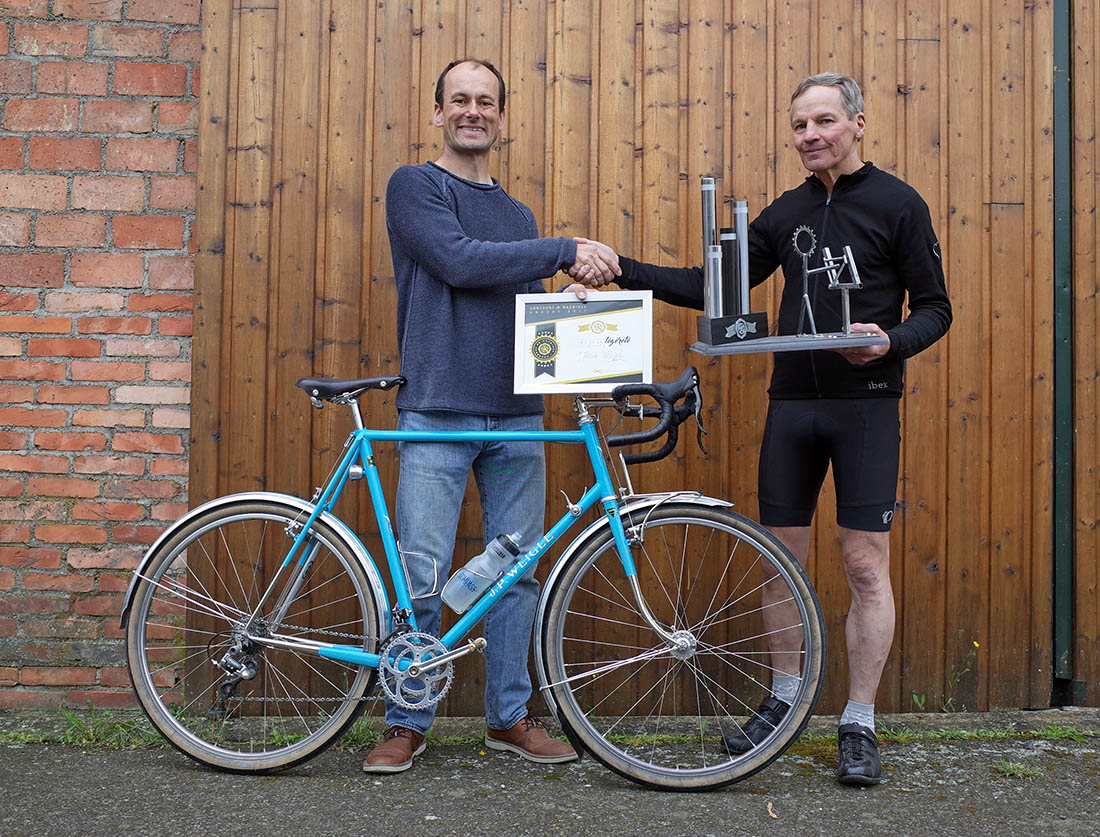
Second place went to J. P. Weigle’s randonneur bike. At 9.7 kg (21.4 lb) fully equipped –including the handlebar bag, spare tubes and tools – it also received the prize for the lightest bike. (The bike alone weighs just 9.1 kg / 20.0 lb.)
I am proud to have been involved in this machine, both as a supplier of components and as the rider. The bike gained points for its light weight and many custom features. It completed the challenging course without any problems – I didn’t carry any tools except spare tubes, since everything counted in the weight. The Weigle also was among the first finishers each day, so it avoided penalties on both counts. What it lacked compared to the winner was “innovation” – most of its features, whether the ability to be disassembled for Rinko, the SON SL generator hub without wires, or the switch on the stem that operated the headlight, had been seen before.
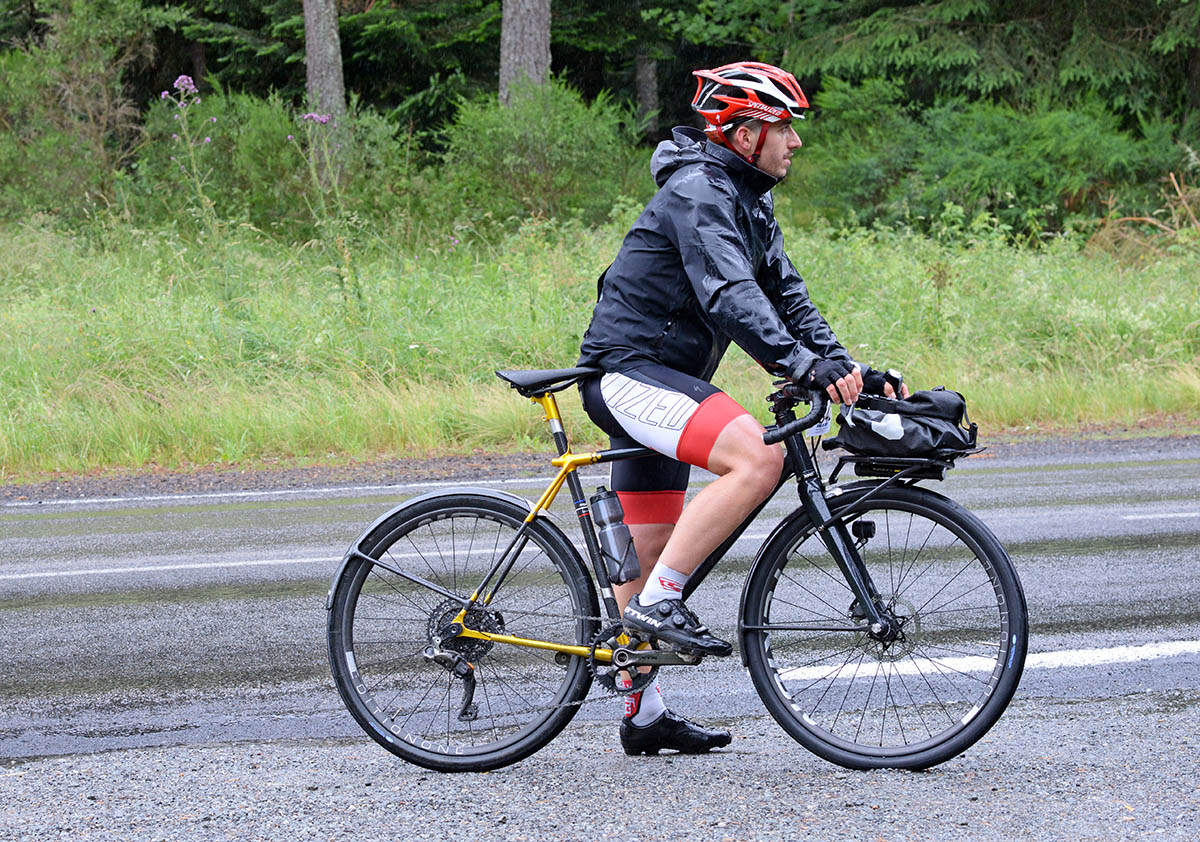
The amazing Cyfac took third place. Ridden by a strong racer, it finished each stage with the fastest speed, yet there were no technical problems. Constructed mostly from carbon fiber (with some stainless steel), this machine also received the prize for the most innovative machine, as well as the vote of the public. The bike sported fenders that could be removed without tools, as well as indicators in the bar plugs that were operated by the left-hand shift lever. (The 1×11 drivetrain does not have a front derailleur.) Pushing the lever for a longer time turned the lights on (or off). It was a technical tour de force that showed what the dedicated team at Cyfac – the biggest maker of custom bikes in France – can do. The only thing that kept it from first place was its relatively heavy weight of 12 kg (26.5 lb).
When asked why their all-carbon bike was 33% heavier than the steel-and-aluminum Weigle, Cyfac’s design engineer explained: “Take our carbon rack, for example. A steel rack can flex, but with carbon, flexing leads to failure. So we overbuilt it, and it weighs 400 g. [The Weigle’s rack weighs 137 g.] And we used a relatively heavy Ortlieb bag.” It was a brave decision to bring a carbon bike that weighs more than steel, but it allowed Cyfac to showcase their specialty: custom-made carbon bikes.
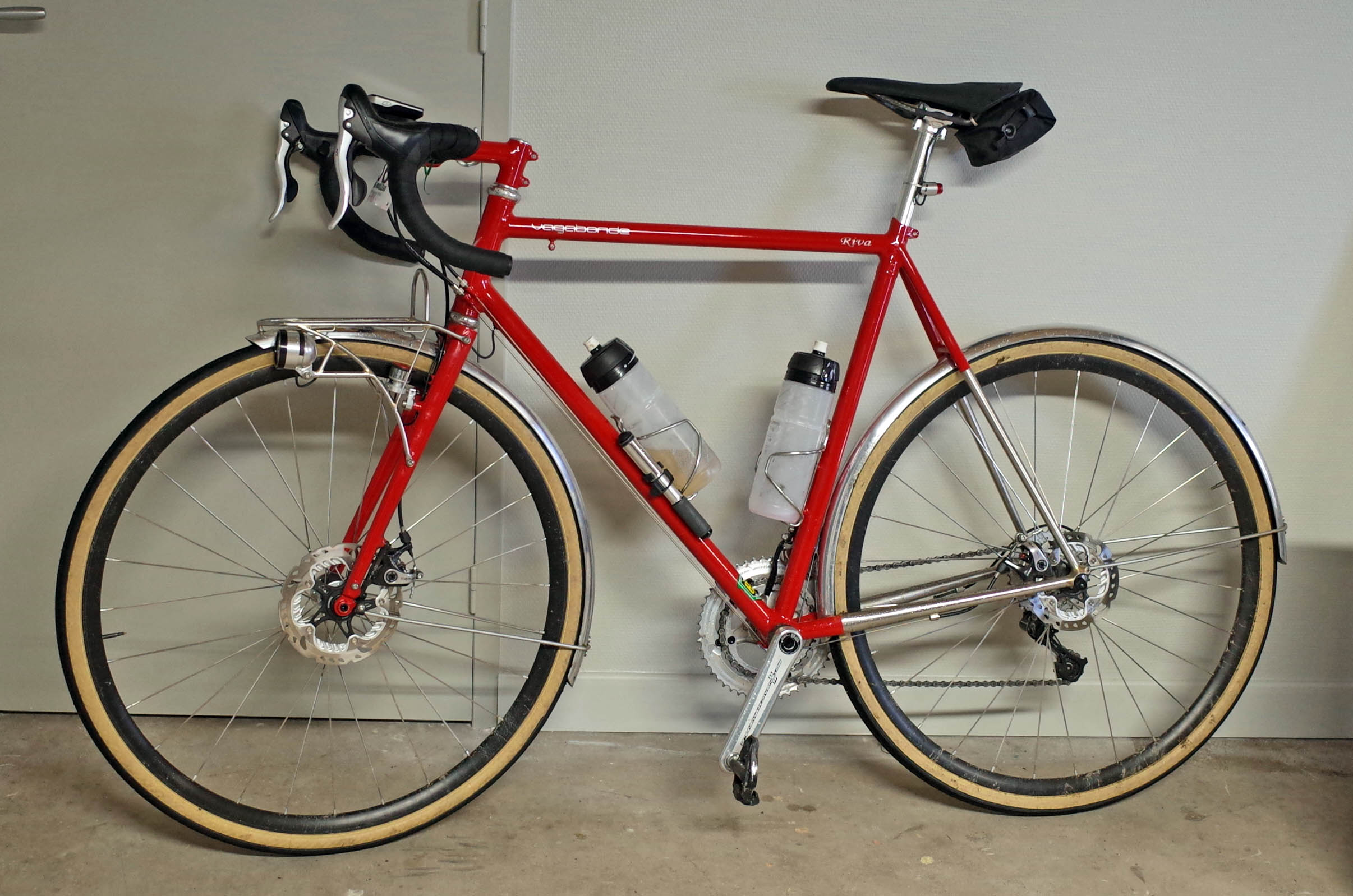
The special prize of the jury went to the Vagabonde, an elegantly simple randonneur bike that was ridden well throughout the event.
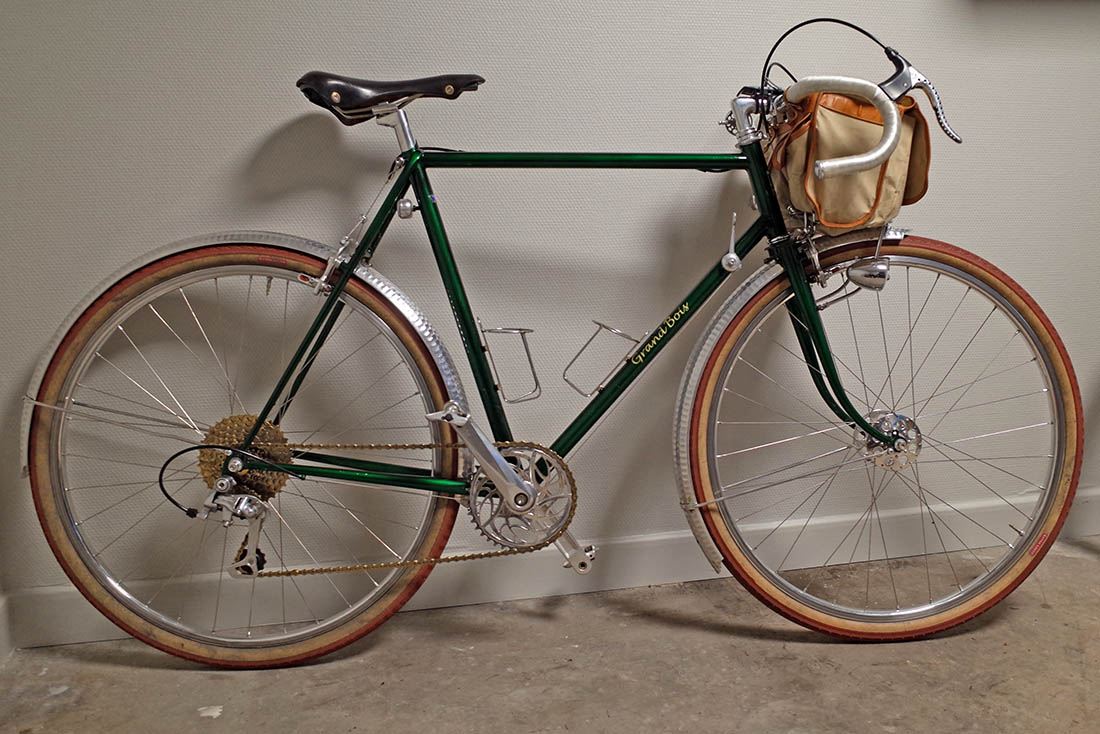
The prize for the best presentation went to Grand Bois. At the start of the event, their bike was the lightest by a small margin, with many parts sporting cut-outs that left only a skeleton of material. While everybody appreciated the work that went into this bike, many questioned whether the parts would be strong enough to hold up on the road. On the first day, the rear derailleur developed a fatigue crack and broke, putting the Grand Bois out of the event.
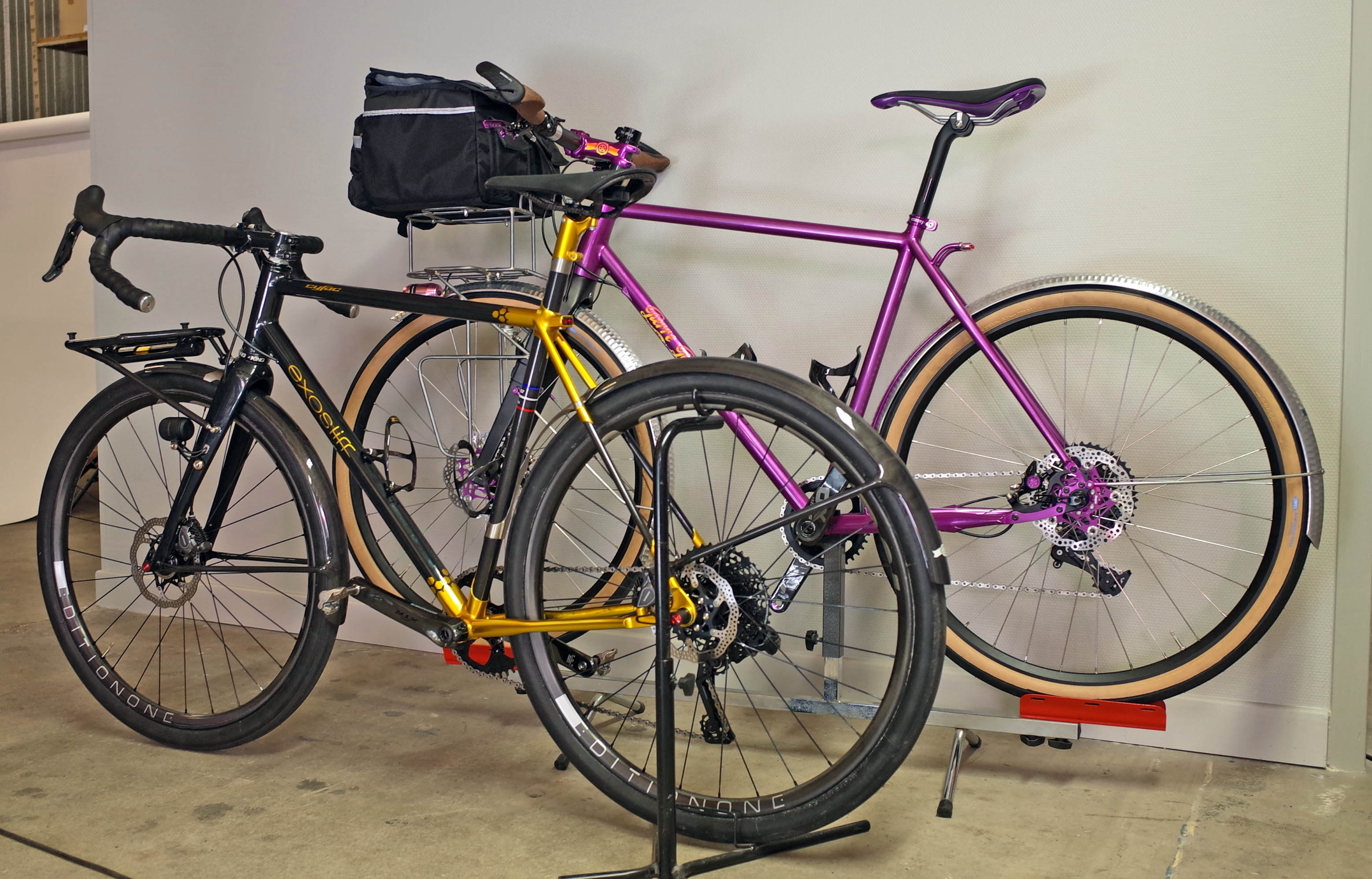
There were other innovative machines. The Perrin (in back) not only featured a double-decker rack (a tent is intended to go on the bottom “shelf”), but more interestingly, its fenders were attached with strong magnets. I had doubts whether the magnets would stay in place on the rough course, but it appears that they did. Imagine a Rinko bike where the rear fender just snaps in place!
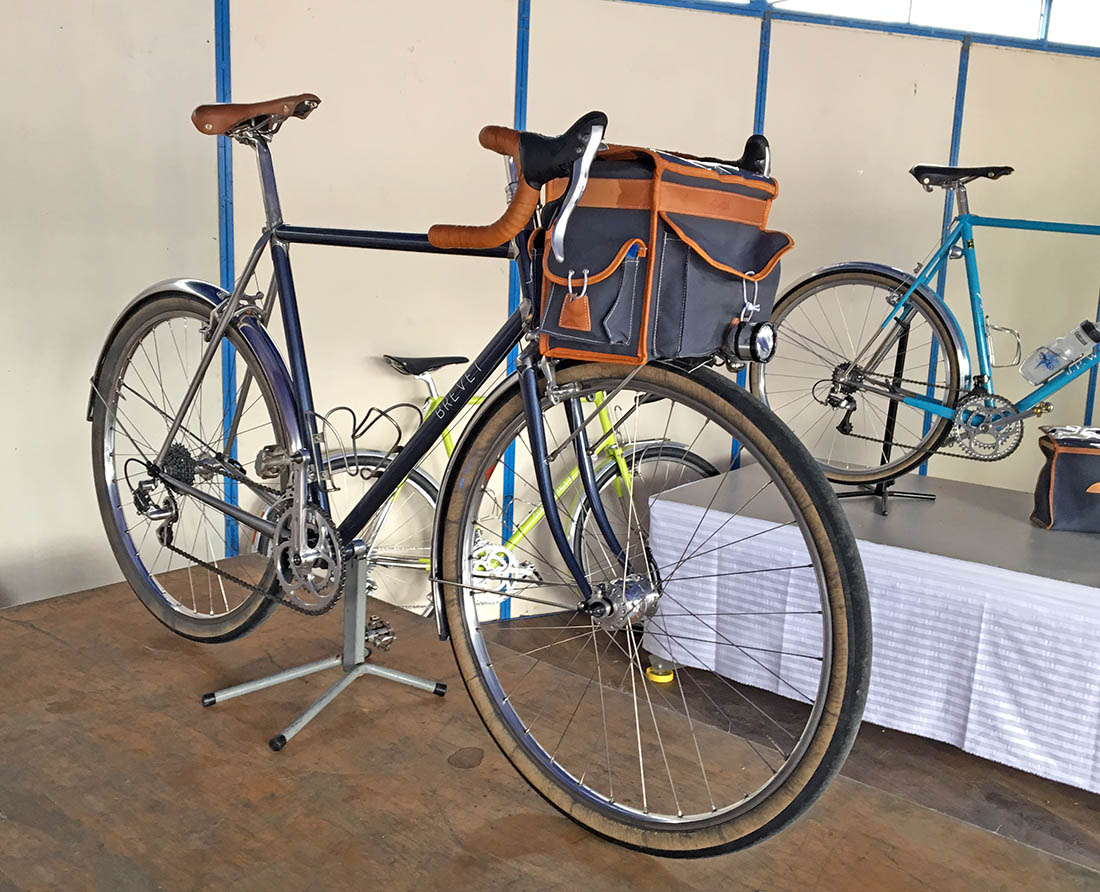
Others, like the Brevet Cycles of Sebastien Klein, were excellent machines that completed the challenging course without problems – not even a flat tire in his case – but didn’t have the light weight or innovation to place high in the final standings. These bikes are great machines even if they don’t figure in the results of the Concours.
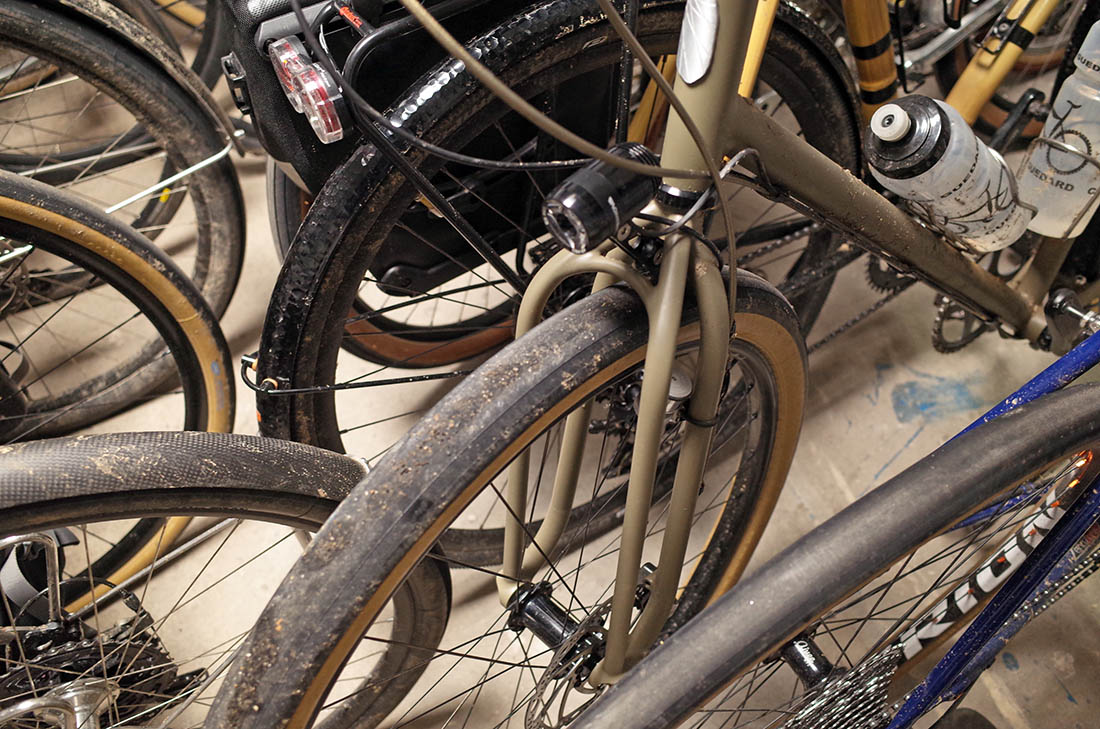
This year, there were no “crazy-light” parts on the bikes, perhaps because the organizers had made it clear that the course would be more challenging. And yet overall, the bikes were lighter than before.
Whereas last year, hardly any bikes completed the course without mechanical problems (including the winner!), this year, failures were rare. Tires were wider than last year, ranging from 700C x 32 mm (Vagabonde) to 650B x 48 mm (Pechtregon). I was surprised that of the 24 starters, no fewer than 16 rode on Compass tires (including the first three places), even though there was no sponsorship, and builders had to pay for their tires. It appears that when high speeds on rough roads are required, French builders choose Compass tires.
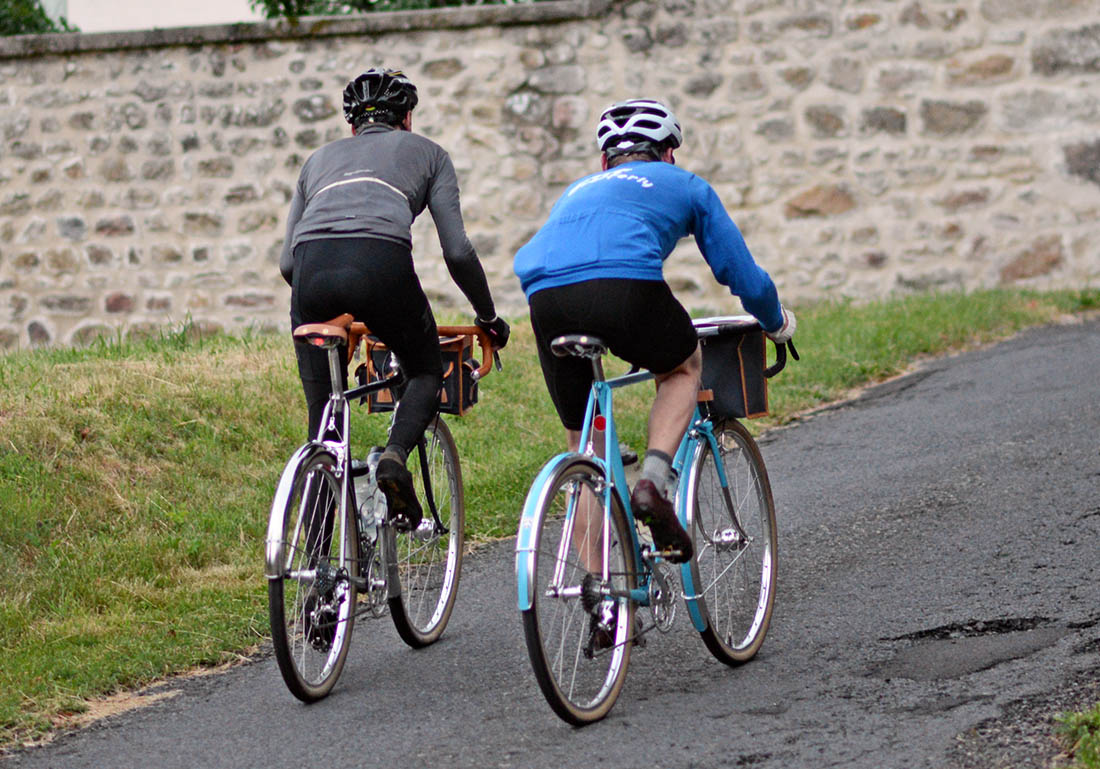
The Concours de Machine 2017 was a rousing success. As intended, it has improved the real-world capabilities of the bikes riders can buy. It has shown interesting ideas for future innovation. And most of all, the participants (as well as the spectators) had a great time!
A full report will follow in Bicycle Quarterly.
Photo credit: Victor Découard (Photo 2), Natsuko Hirose (all other photos).


